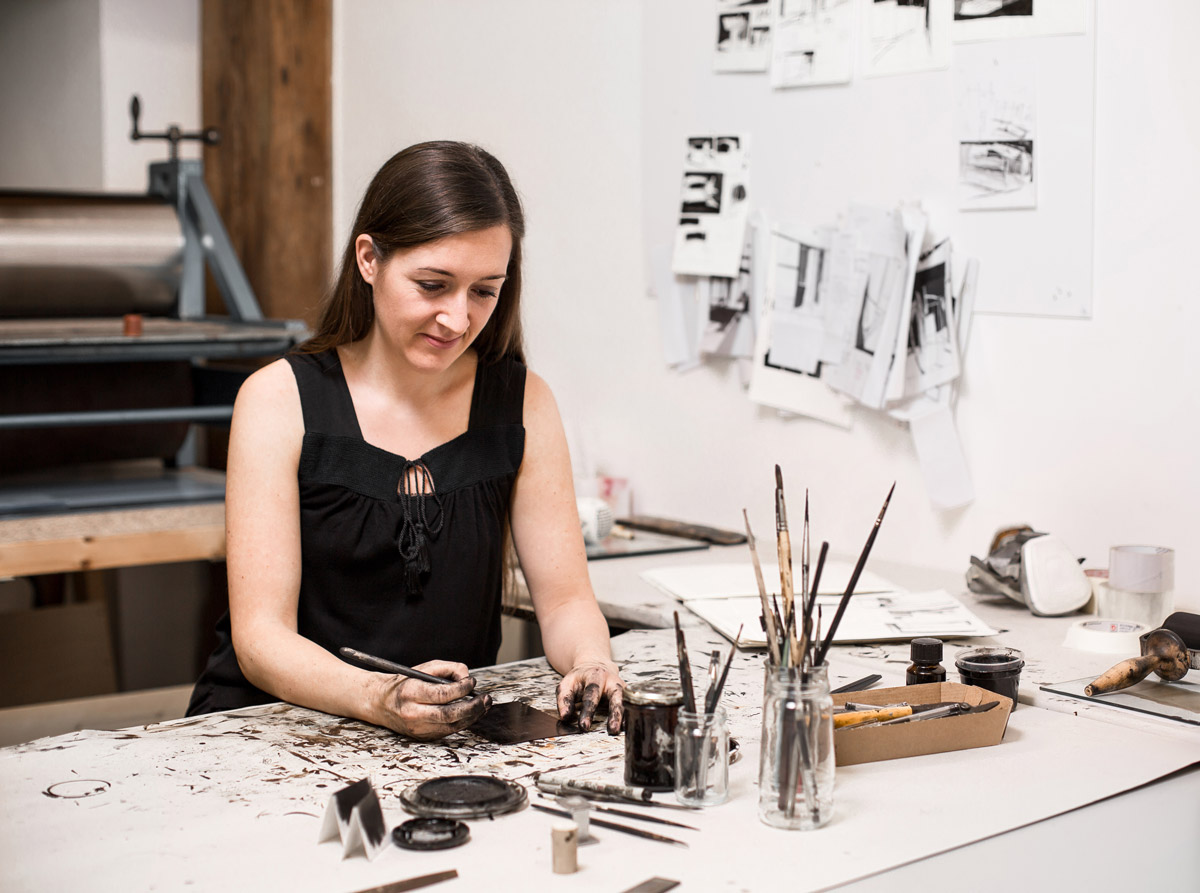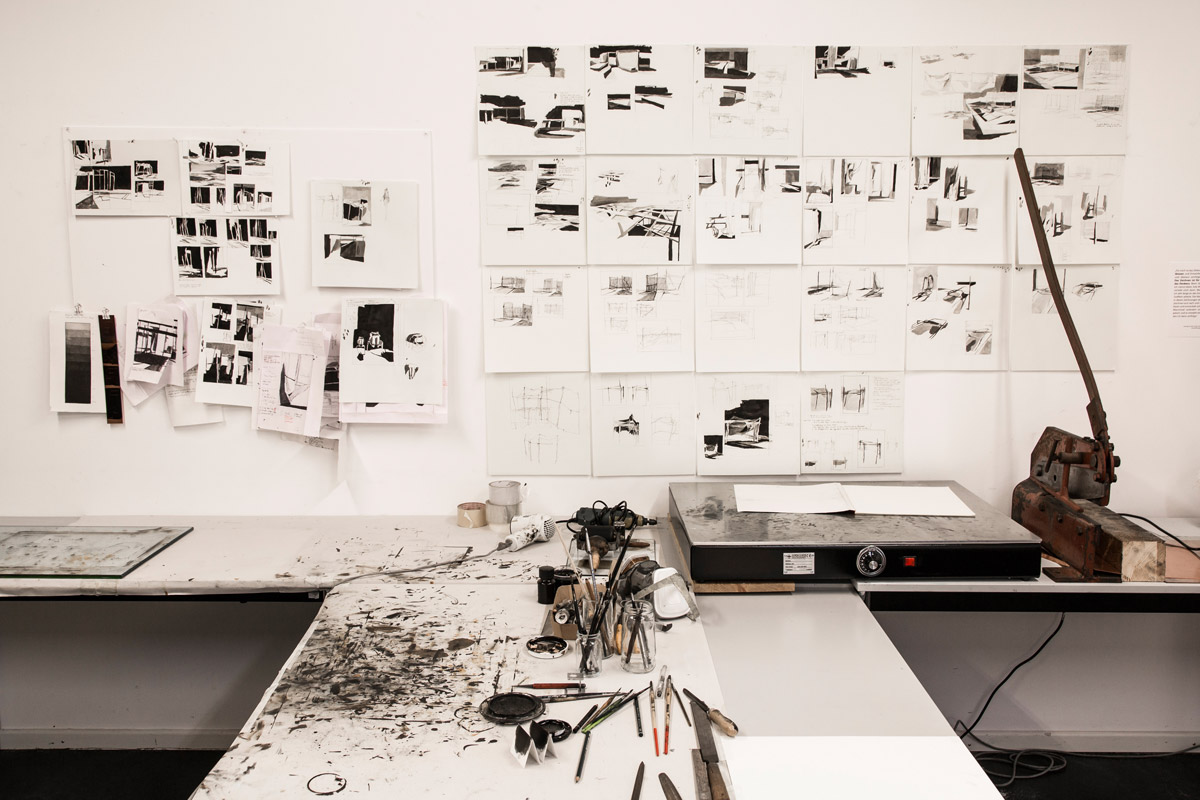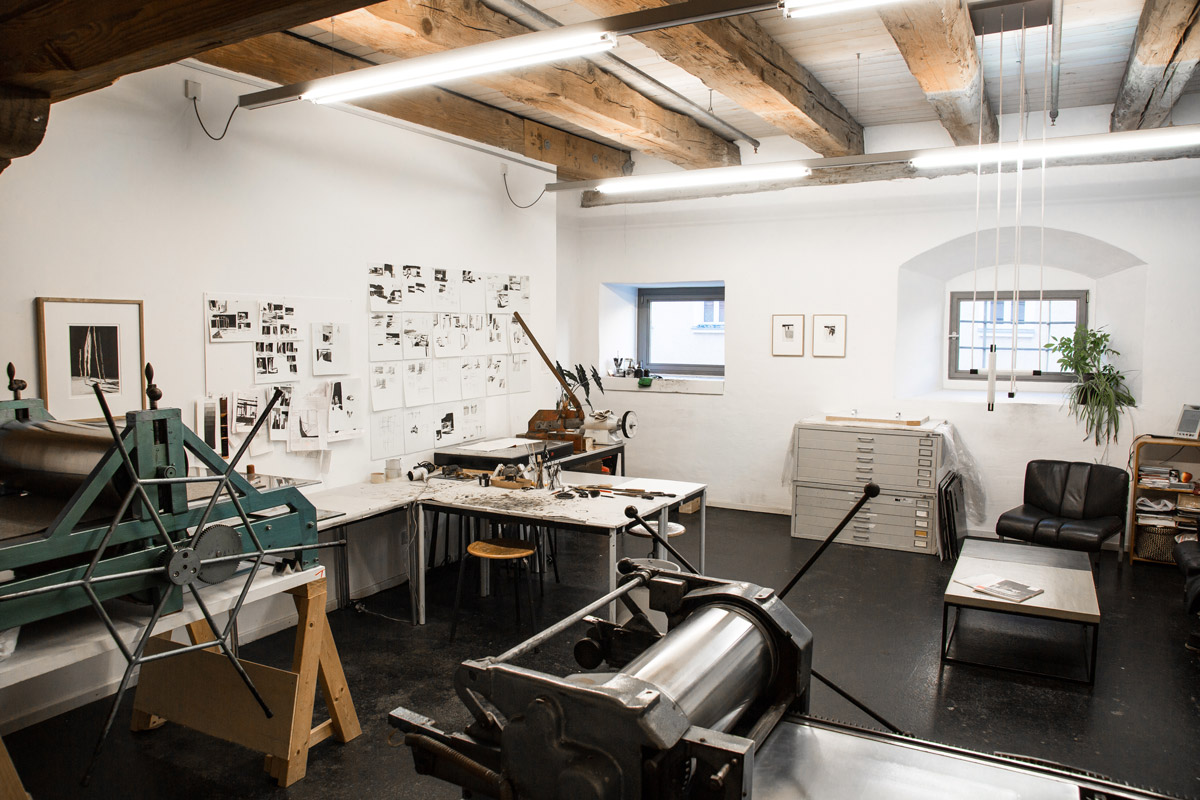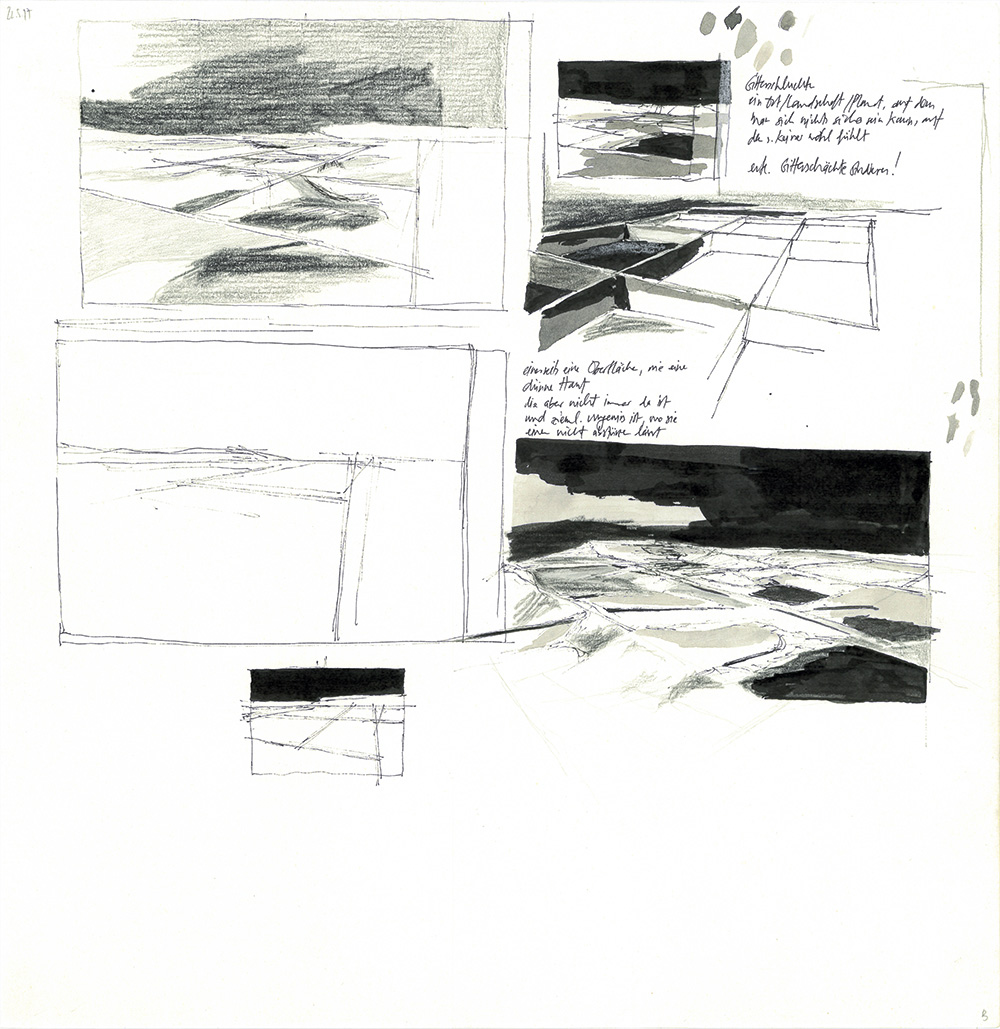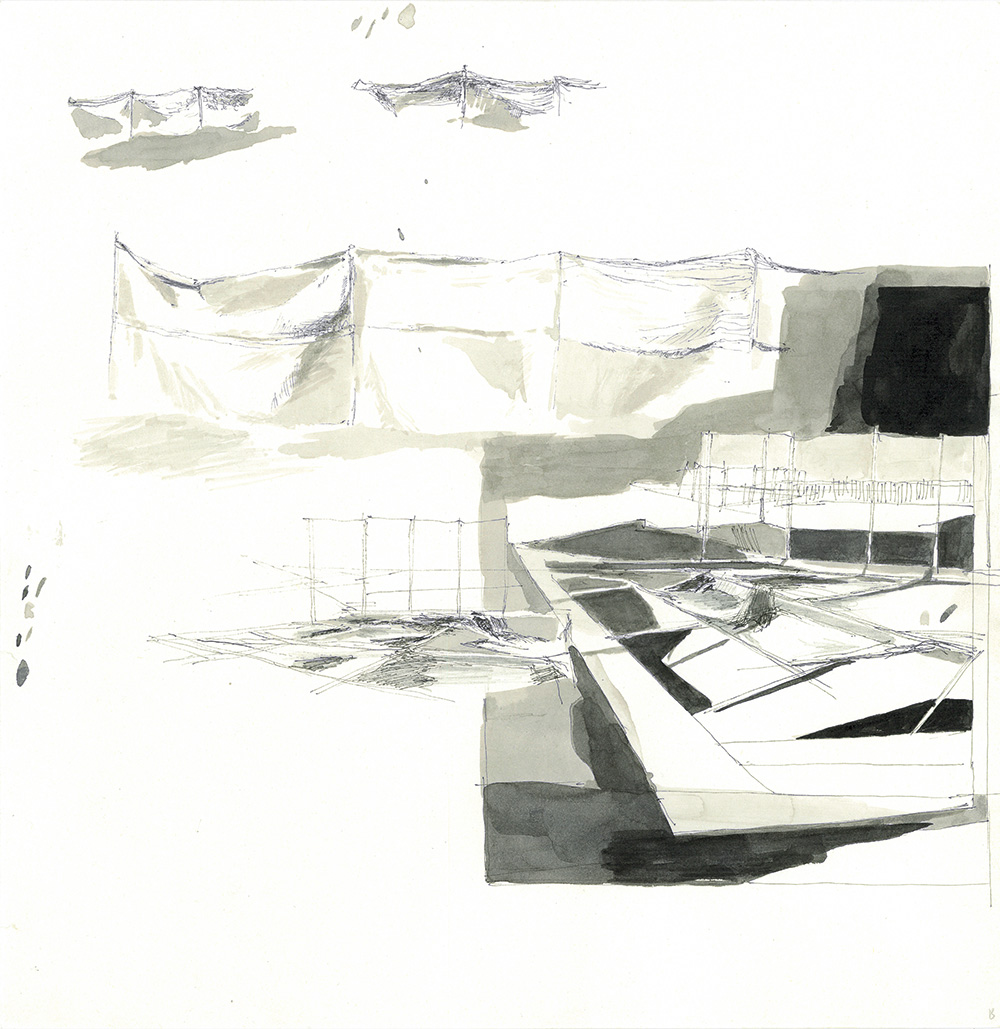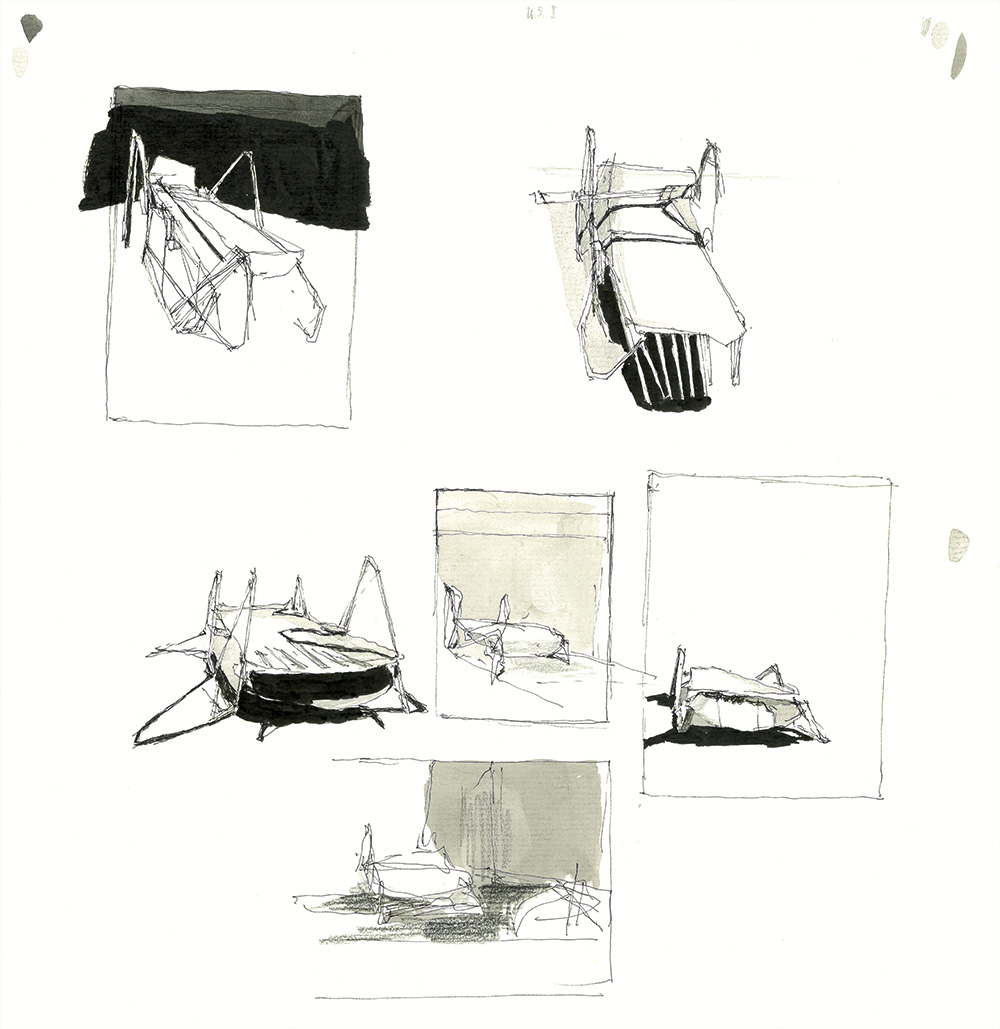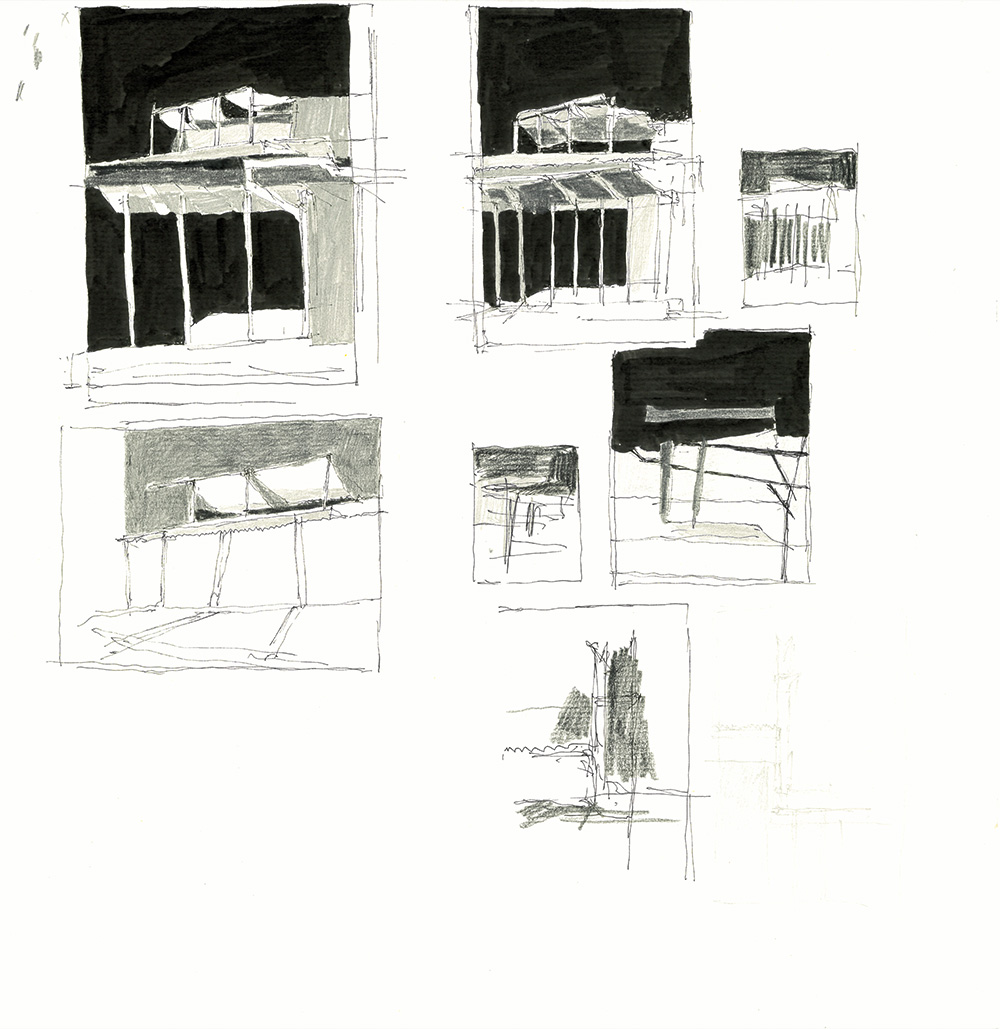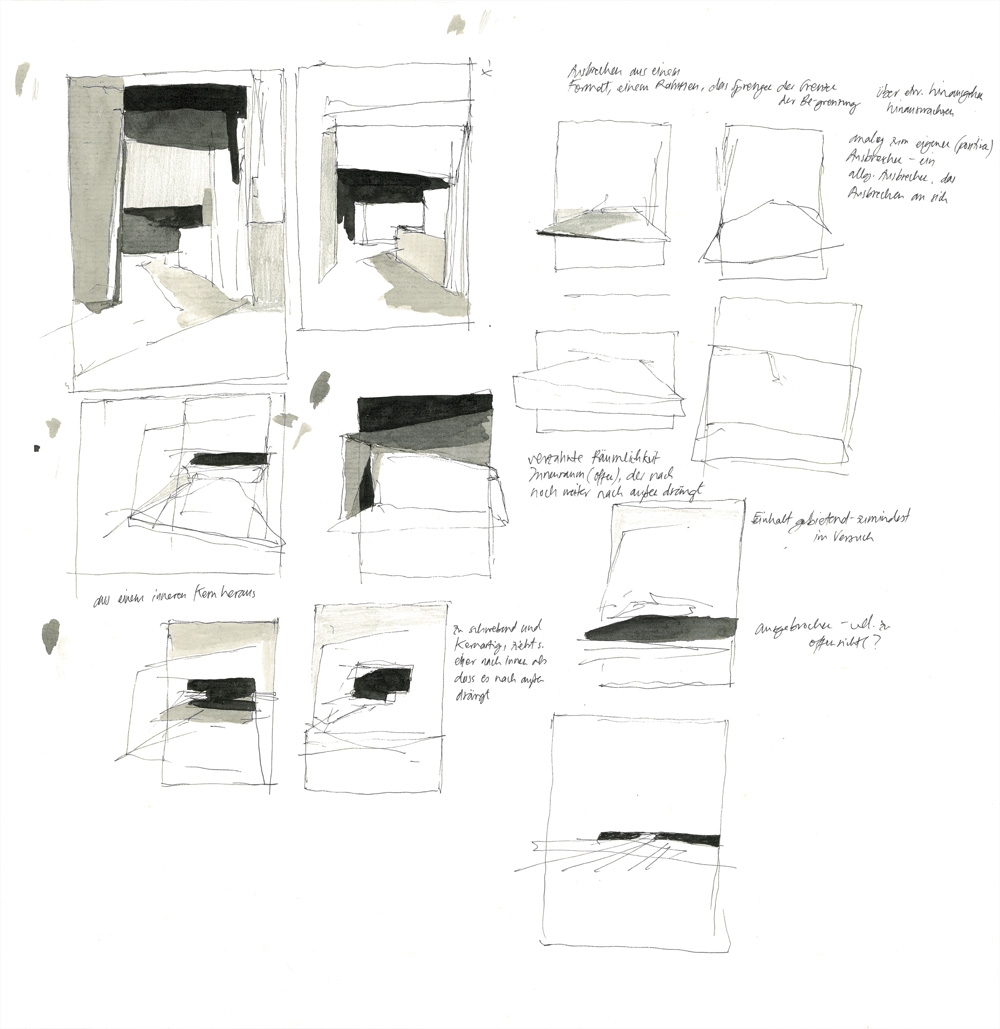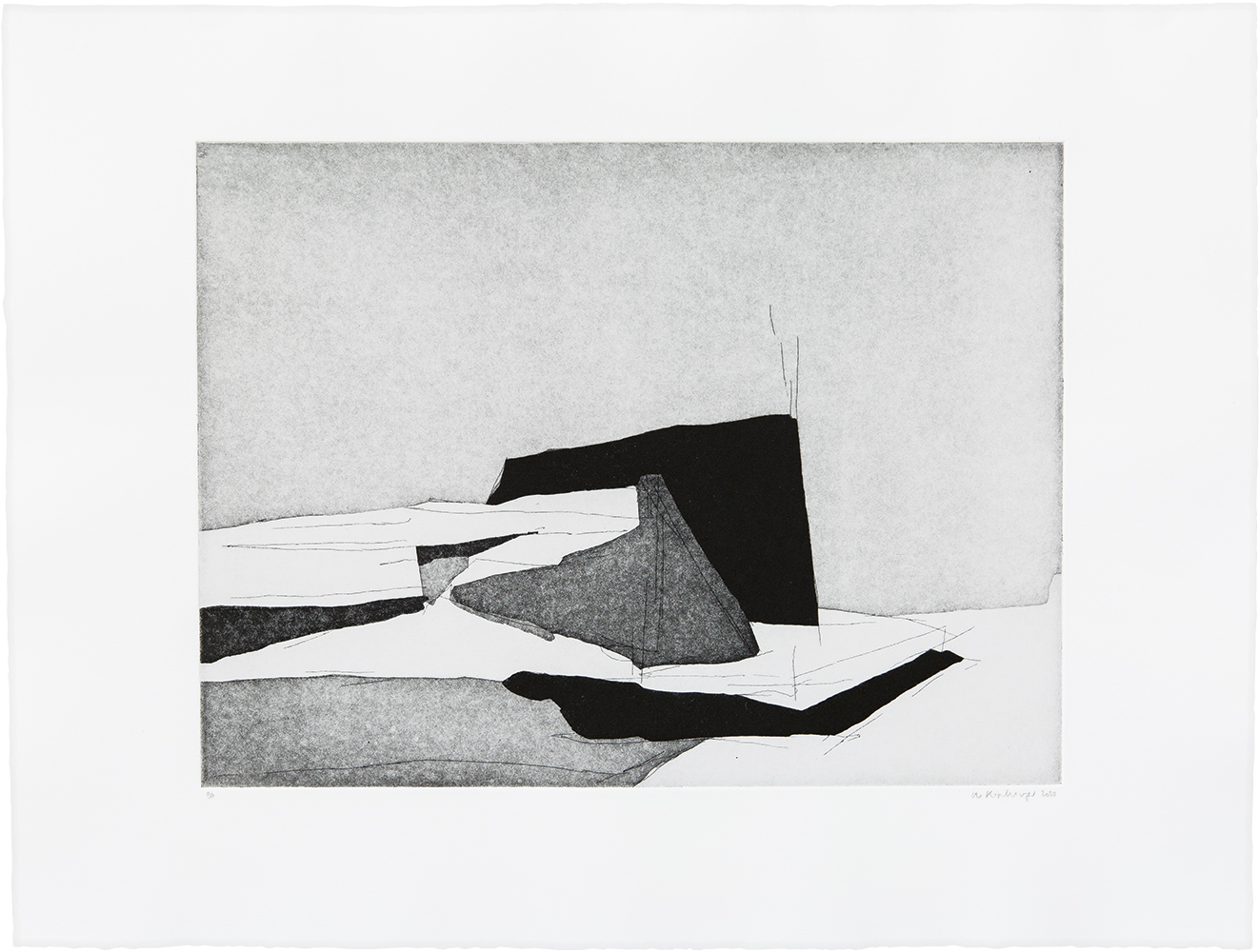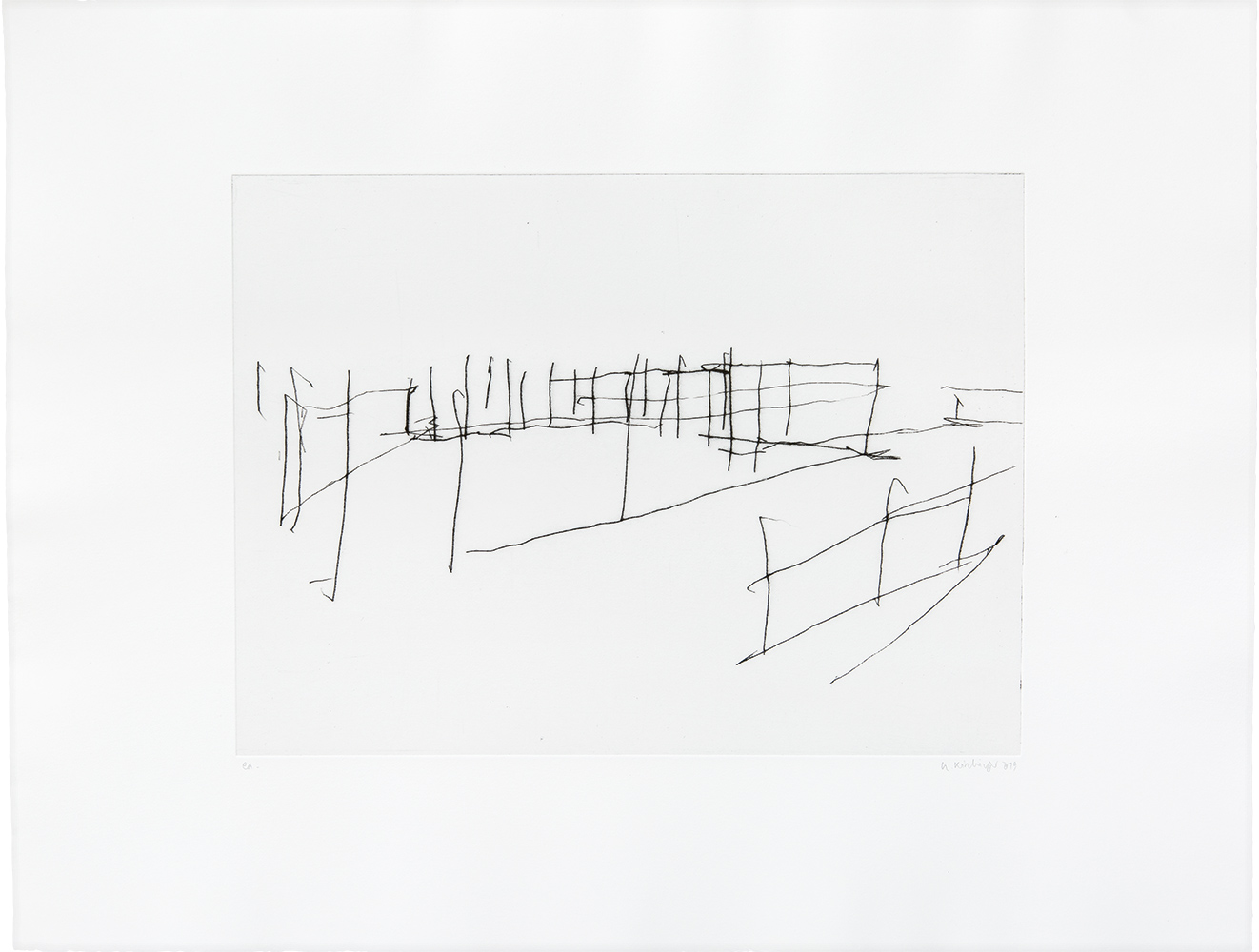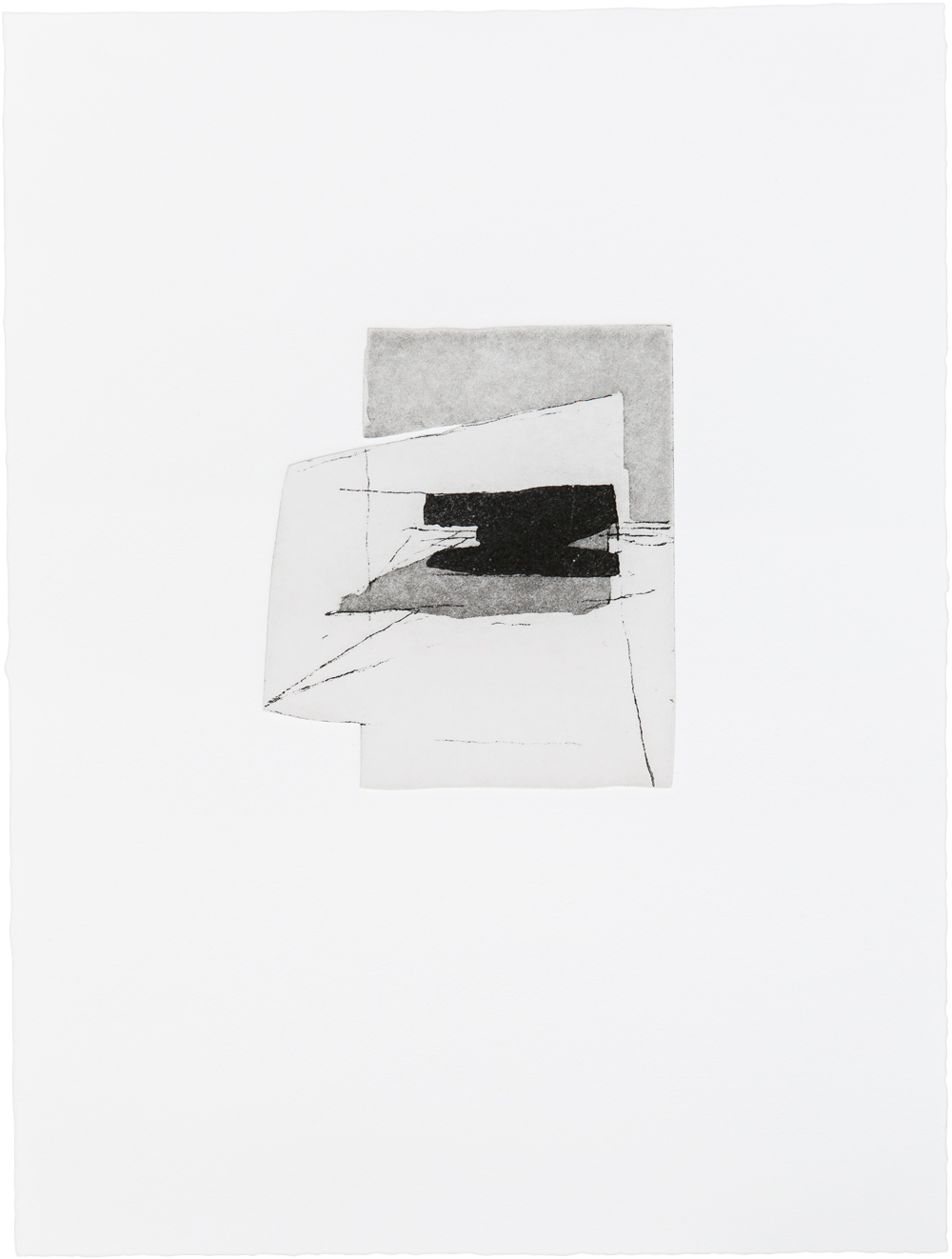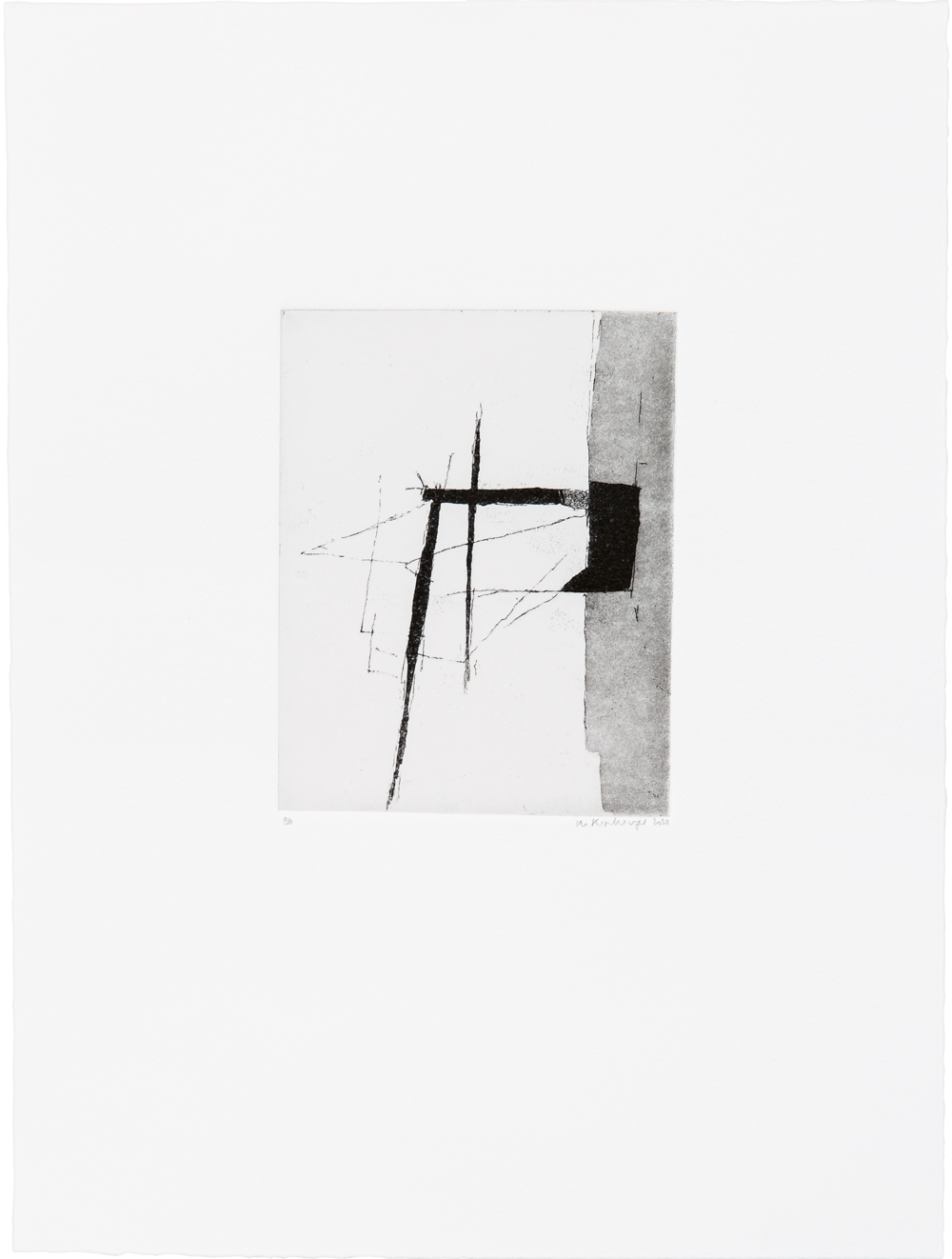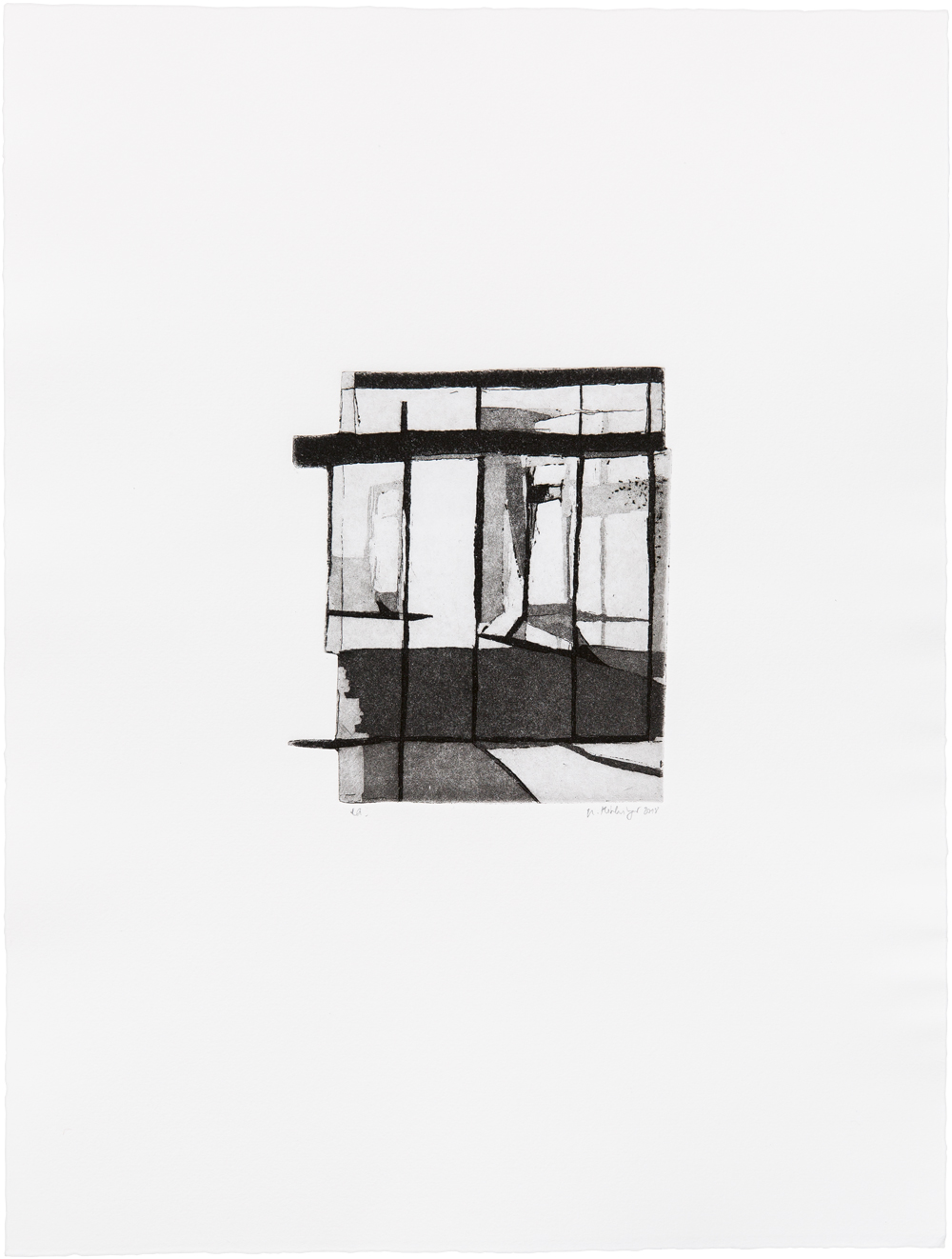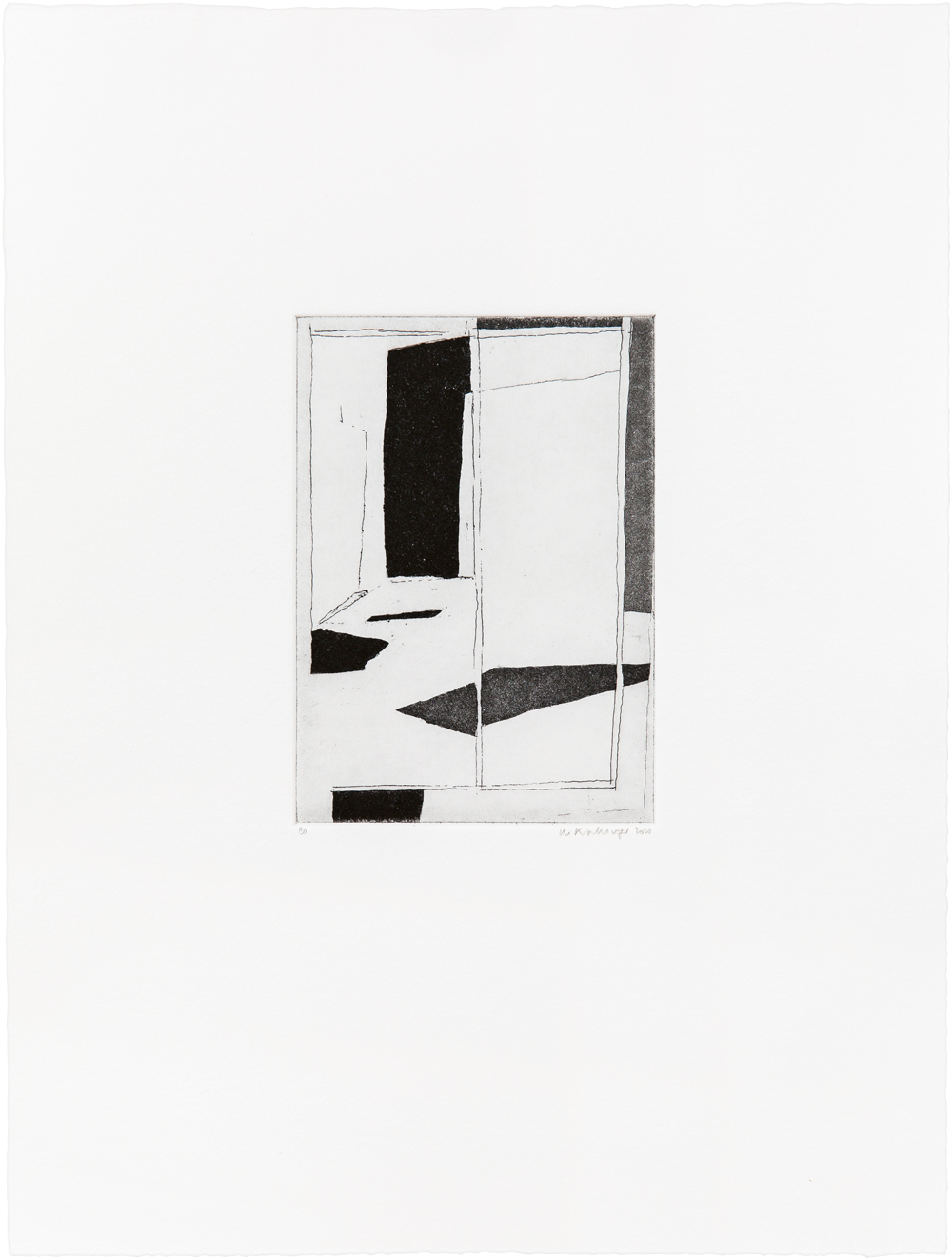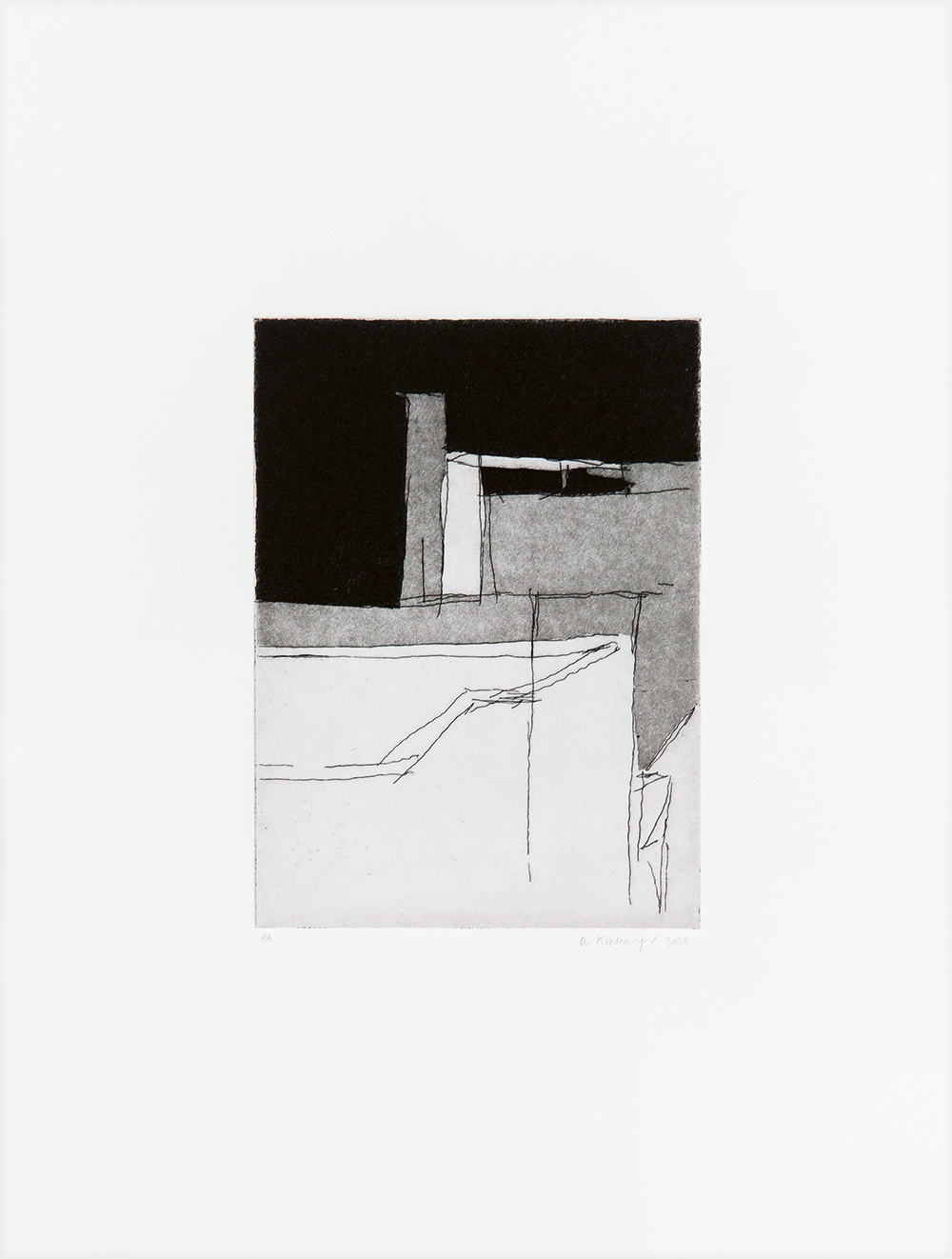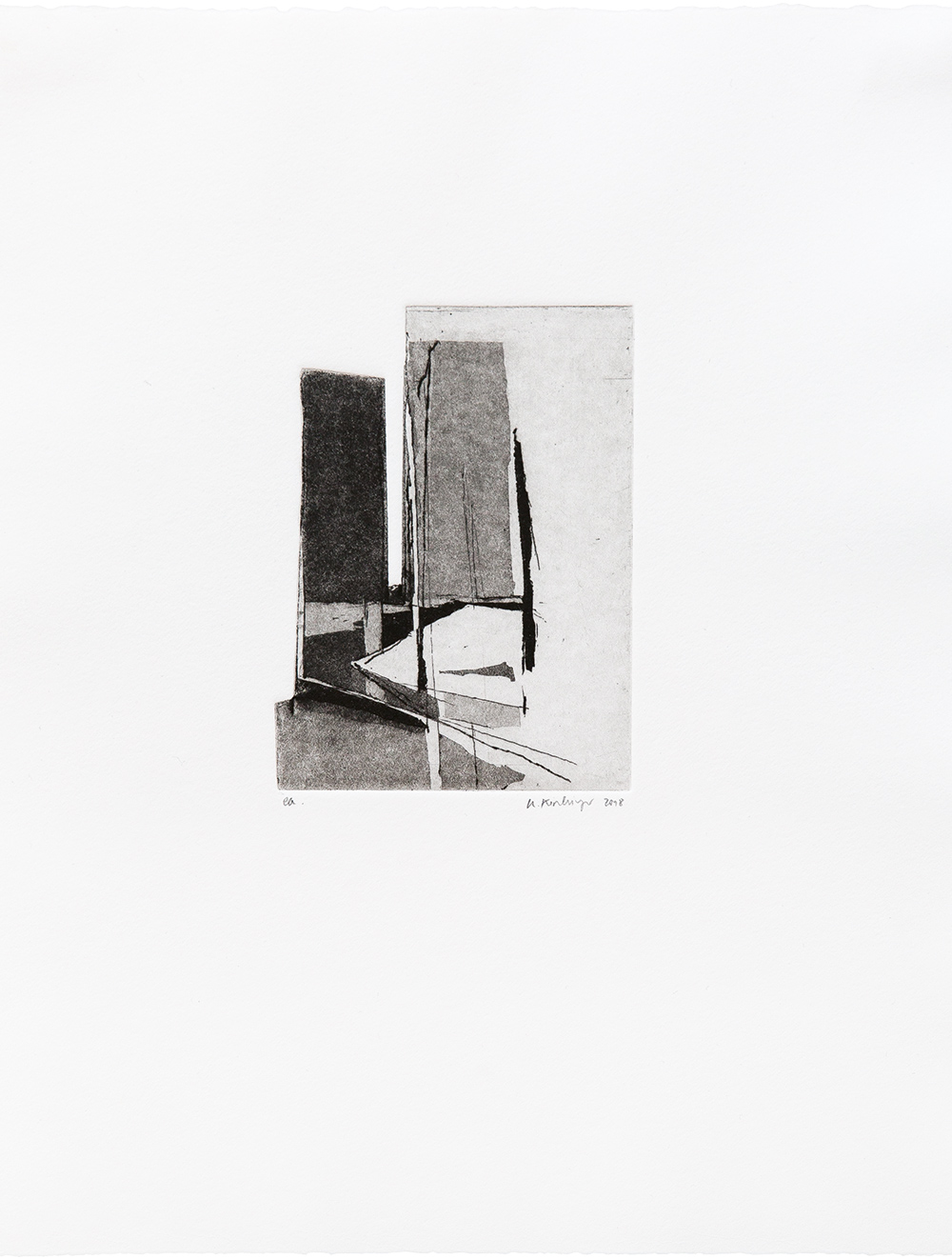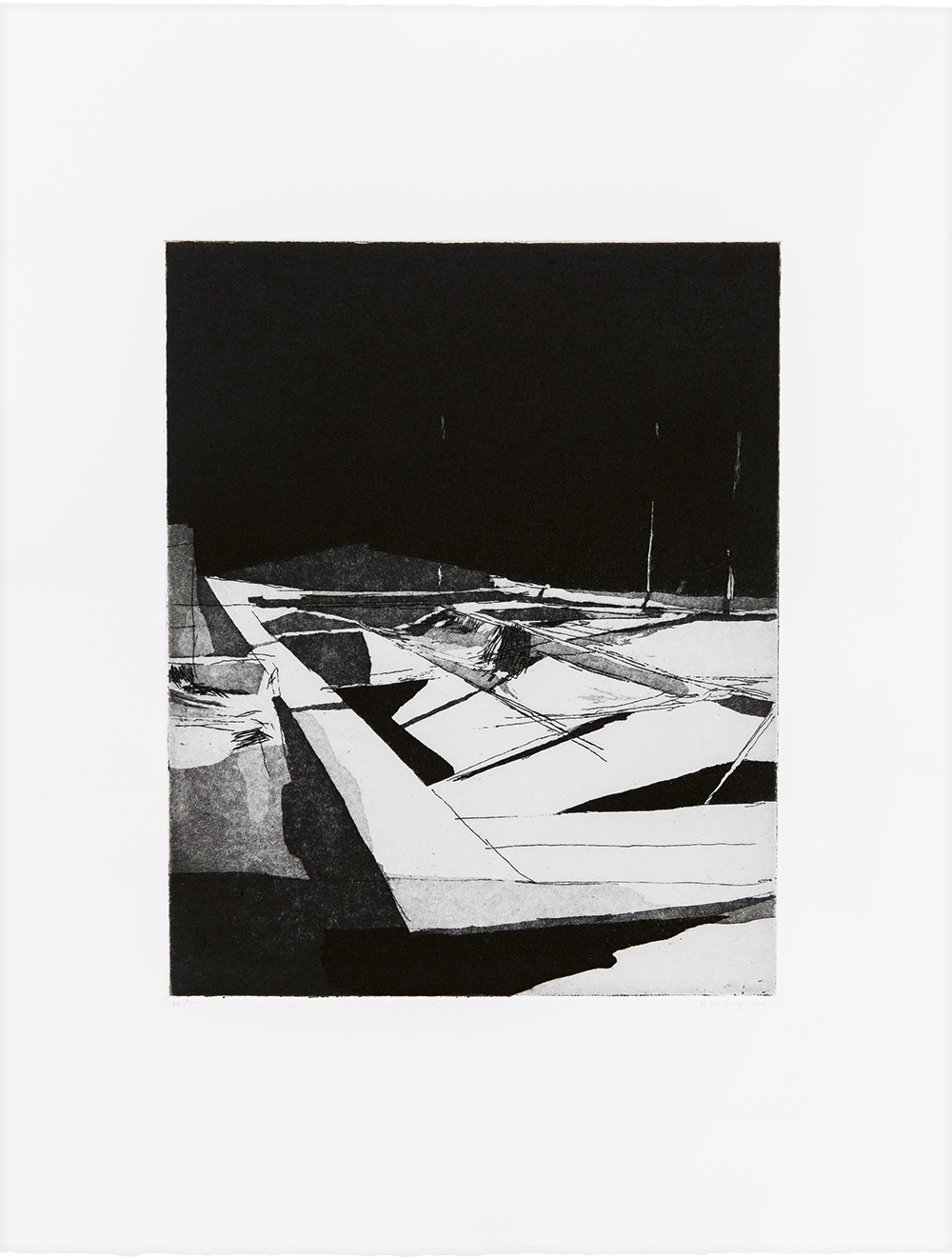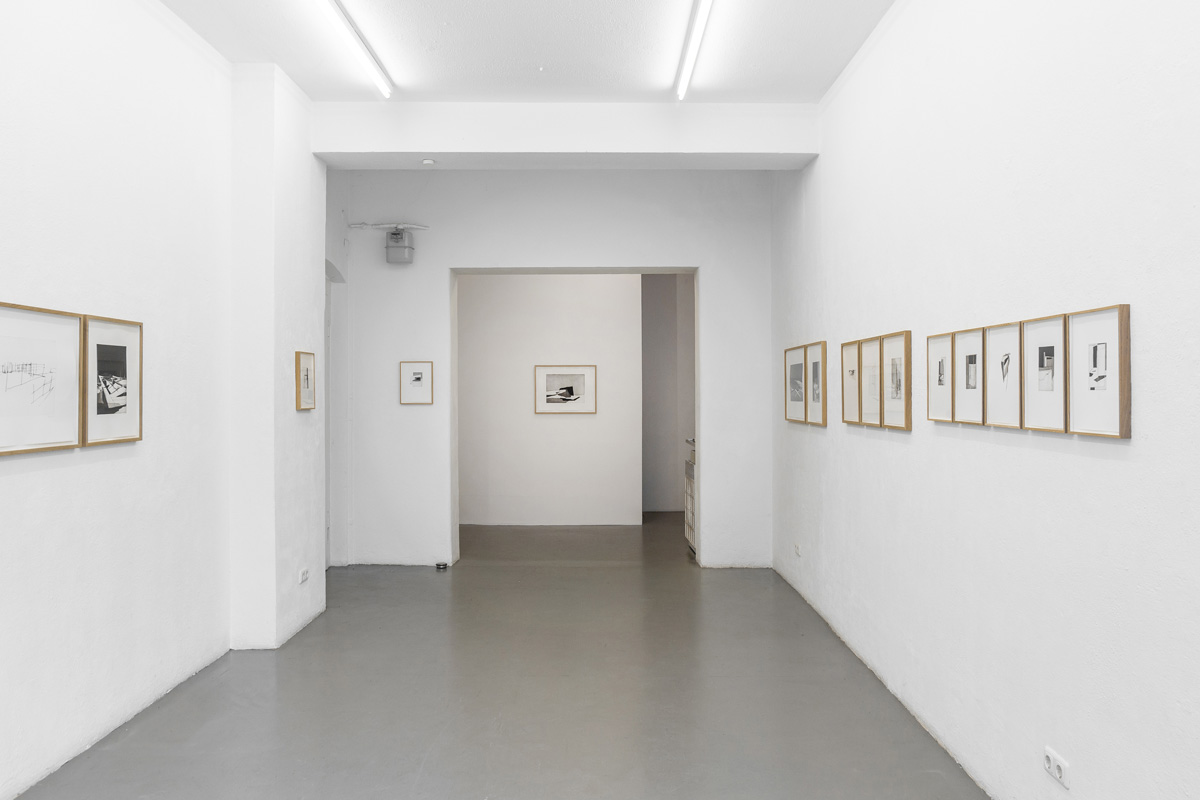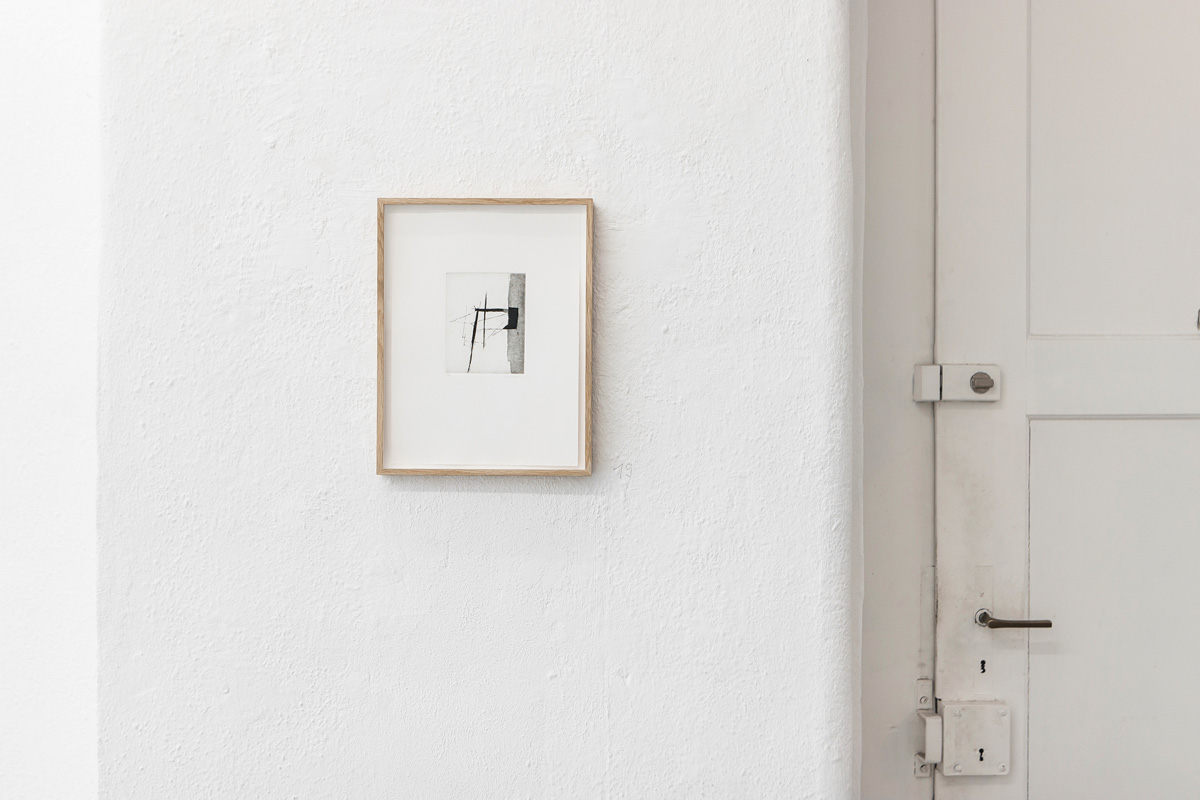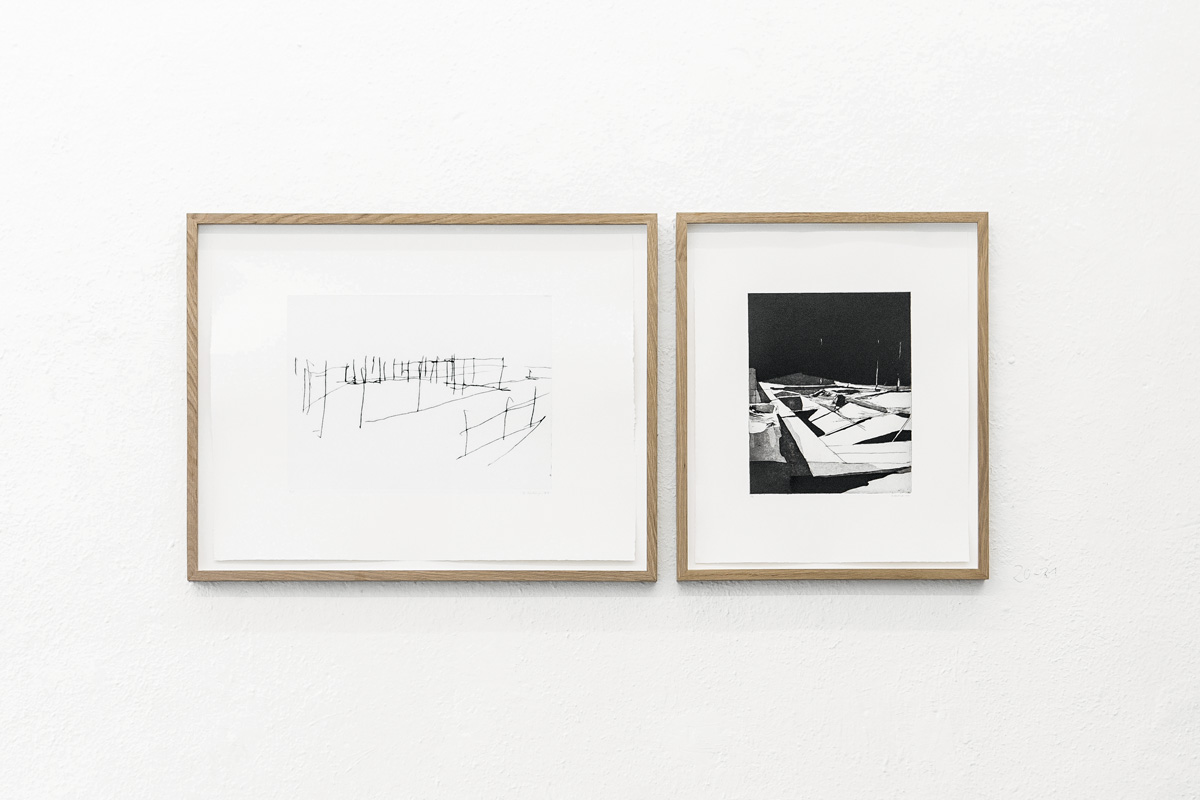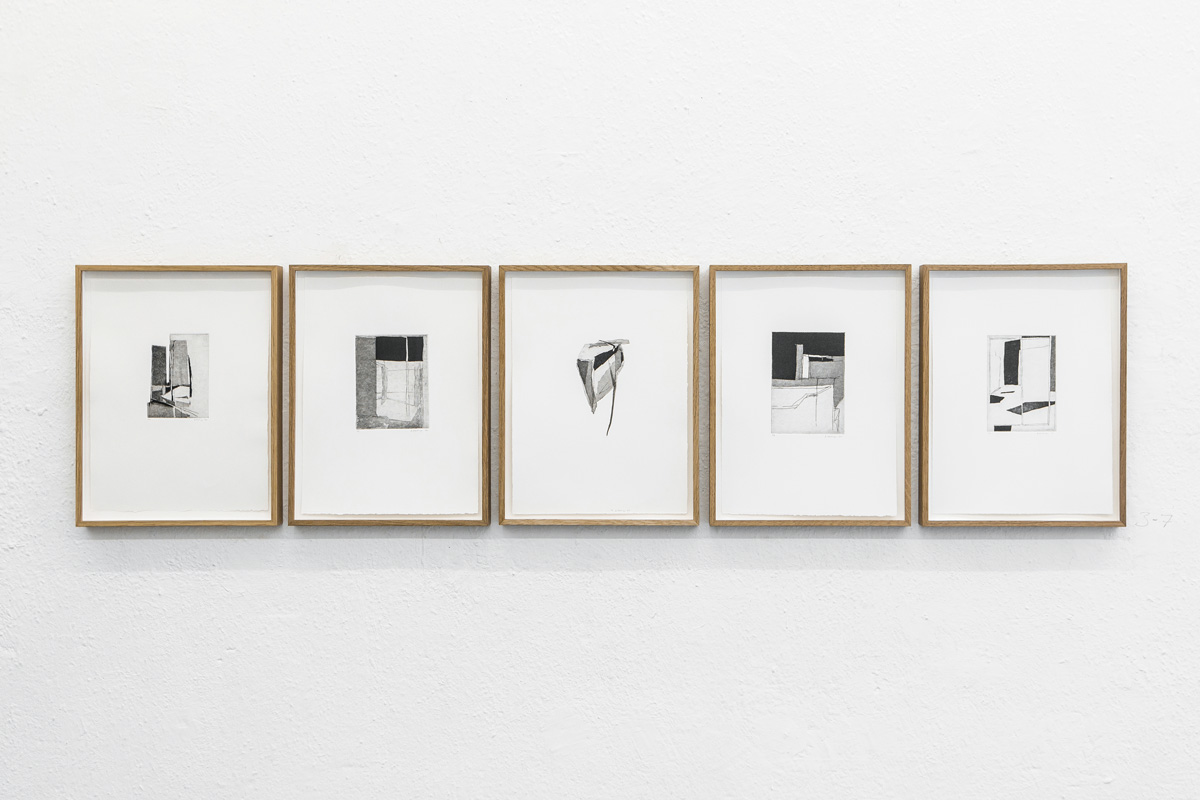21/019
Christina Kirchinger
Visual Artist
Regensburg
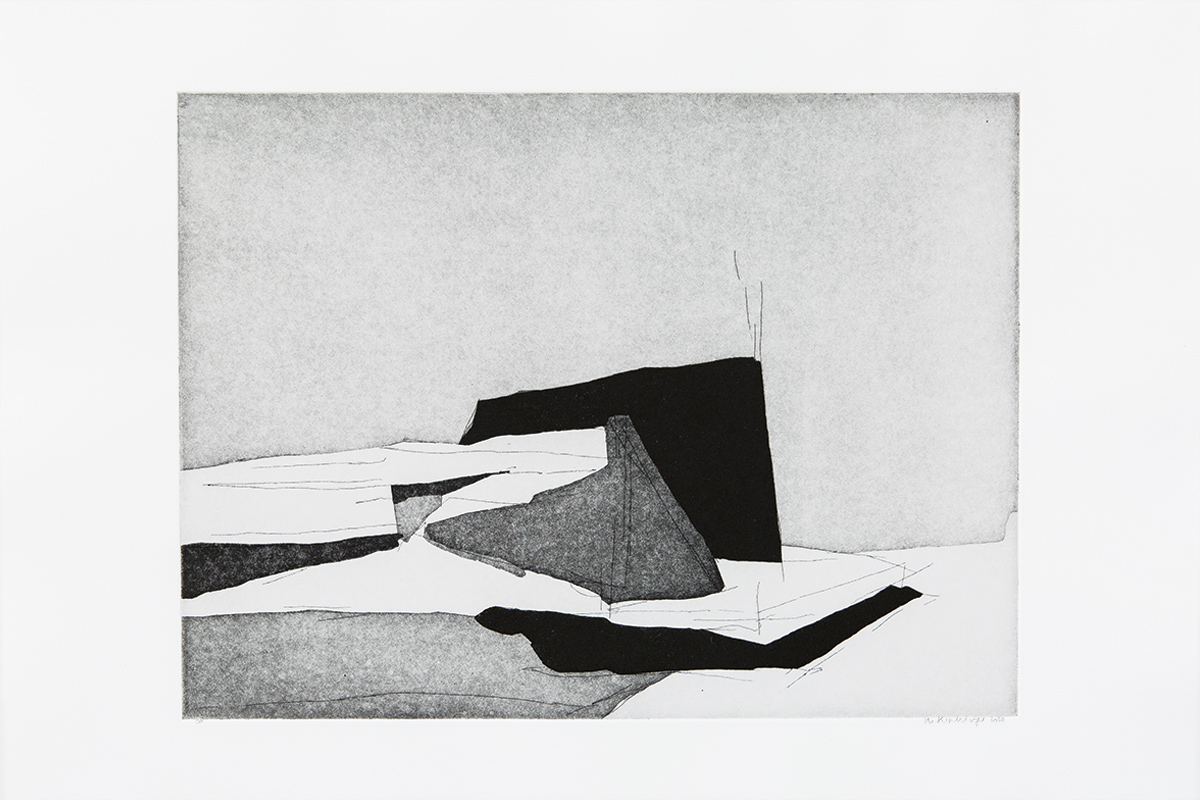
«I study architecture, so my work is partially nourished by details I have observed and perceived.»
«I study architecture, so my work is partially nourished by details I have observed and perceived.»
«I study architecture, so my work is partially nourished by details I have observed and perceived.»
«I study architecture, so my work is partially nourished by details I have observed and perceived.»
«I study architecture, so my work is partially nourished by details I have observed and perceived.»
Please, introduce yourself…
I am a visual artist, I do etchings, aquatints and drypoints. For me, intaglio printmaking is simply the perfect medium. I love its peculiarity. You have to see an original etching or a drypoint to see what I am talking about, digital reproductions cannot keep up with the original. I love the way the lines feel, the etched lines that stand on the paper like welds, and the scratched drypoint lines that are as one with the paper and seem to melt into it. I also love the aquatint technique to create tonal areas. Aquatint allows me to create velvety, homogeneous and distinct tonal fields of one and the same black. They appear to be flat and atmospheric at the same time.
For me, etching is inherently linked to drawing. Drawing is a form of thinking to me. It allows me to quickly move and spontaneously develop ideas. The lines can directly follow the departures and detours of my mind. I draw a lot, because the etching techniques take lots of time and, in some respect, they are less spontaneous. Especially when etching aquatints, you often have to complete a specific set of steps. But ultimately, I cannot do without the intaglio printmaking in order to complete the work.In my drawing, I like the spontaneity, but I definitely miss the peculiarity of the printed lines and fields. My drawings also don’t have the same condensing and reductive qualities as the intaglio where I use one kind of black ink and only one printing step. The intaglio printmaking techniques really condense and intensify my drawing.
Christina Kirchinger | © Matthias Weich
How did you find your way into the field of art and architecture?
I had a great art teacher at school from the 11th grade on. She opened the door to the fascinating world of art for me, for example when she took the whole class to the “Biennale di Arte” in Venice. It is thanks to her that drawing could become and build a world of its own for me. Art and drawing have become my own parallel world where I can do whatever I like, whatever I can imagine or think of. A place, where I can be completely with myself, and at the same time reflect upon the world.
What comes to your mind, when you think about your time at university?
… a huge printmaking workshop, room number RW 109-K, where I spent days, and nights, and weekends during my studies.
There is another room as well, where I spent lots of time later, after my studies: S 136-K. That one was my office for a long time, until March 2020. I was a research assistant at the Institute of Fine Arts and Aesthetic Education (University of Regensburg) for nearly six years and started my PhD thesis, which I am soon going to finish.
And of course, the overall architecture and the buildings of the University of Regensburg come to my mind. I am fascinated by the university’s brutalist architecture which is very much characterized by clear forms and bare concrete. I love drawing there, although I do not spend so much time there anymore. But during my studies, it was very important to me.
I study nature, or rather architecture, so my work is partially nourished by details I have observed and perceived. When studying nature, there is a crucial moment: as soon as a drawing becomes alive, and gets a life of its own, you have to focus on the drawing and no more on nature – in order to build a world of your own. At some point, you have to banish the outside reality in order to gain an inside reality, to balance reality and drawing so that the drawing, the draft, can become a world of its own.
Perhaps, I should add something to the room numbers I have just mentioned. Somehow, I started using short cuts or letter combinations as titles for my prints. Often, those titles refer back to the place where something caught my eye. For example, there is a print from 2014 called “109K”. This title refers to the room designation. As it refers back to the place where the drawing originated, it indirectly also stands for the kind of thing I perceived – without naming what I captured within the drawing, as you cannot put it into words. If I could, I wouldn’t need to draw. All in all, the important thing here is that the title works as a kind of abbreviation and contraction – that goes along with my way of drawing, which is some sort of condensation, too. And the titles somehow work the way that room designations do. They are descriptive – and not interpretive – short cuts that enable prints to be distinguished from one another.
By the way, sometimes, I don’t know anymore where I have done the drawing, so I use abbreviations of words that come to my mind or abbreviations that just seem to fit. I want to avoid titles which suggest a singular perspective – and thus provide a particular path for entering a drawing so to speak – but rather ones that remain as open-ended as the drawings themselves do to some extent. There is no single way to perceive or decode my prints, as everybody has different memories und associations. But, I think, there are several views that somehow point into the same direction. However, there is an overarching question which runs through all my etchings. The question that drives me is to understand how the world is built up and how built structures work together.
How would you characterize the city you are currently based at as location for working as an artist? How is the context (of this specific place) influencing your work?
I live in Regensburg, Germany. Regensburg is a typical medieval town and has wonderful parks along the Danube river. However, other architectural forms, for example contemporary ones, are of more interest to me. Besides the university, there are other interesting buildings and works of art in Regensburg, like the new synagogue or the site-specific artwork by Dani Karavan. That said, in my drawing and etching, I am not really interested in entire buildings or interiors, but rather in man-made sites and their spatial structures. I look at the overall structure of a place or even more often at details you wouldn’t value or even notice in everyday life. You can find those anywhere where humans are or have been.
What does your desk/working space look like?
This is the uncluttered version of my working desk in my studio with sketches properly displayed on the right. The sketches on the left are the more authentic working-version. To get a completely authentic impression, you should also imagine there to be some empty coffee cups, printing plates and paper lying around on the table.
For you personally, what is the essence of architecture?
It is a form and a way of expressing the way we live and think.
For me personally, architecture can be a source of inspiration. But it’s not only architecture which can be a starting point for drawing, but also inconspicuous constellations of things, like the shadow a table throws on a cupboard, or the interplay of a table edge with a cable or a plant.
I am interested in the structure of space. There are places, where you can see far into the distance, where the land lies flatandstretches out deeply and broadly.But, space also can end abruptly, when there is a wall or a fence in front of you. Things like walls, fences and other markers and boundaries affect our experiences of a place. Humans have developed systems to shape and structure the environment and the spaces we live in.
In my drawing, I engage with such man-made sites. I am particularly interested in the spatial structure of those sites: I am fascinated by the peculiarity of how they extend into the depths, how they lie flat but still seem to hint at almost endless expanses, their spaciousness and their narrowness, their wafer-thin appearance, and how they abruptly cut into the planar surface. This also makes me question my own perception and gives rise to higher-level questions such as what is real and what merely appears to be.
As you may have noticed, I have so far only explained what architecture and other observations mean for my drawing and etching.I should perhaps pick up the question again and answer it more straightforwardly, but in terms of art, which I think applies to architecture as well: art opens our eyes and minds. Whenever you visit a (good) art exhibition or see a work of art, you can be encouraged to look beyond your own horizon and start thinking.
Again, personally speaking, drawing enables the same process of looking beyond the here and now, of asking questions and reflecting.
Sketches – © Christina Kirchinger
What needs to change in the fields of art and architecture according to you? How do you imagine the future?
We should not “consume” art and architecture as some people say, but be open-minded and allow ourselves to grow from and with art and become more sensitive and deliberate through our encounters with different works of art.
Website: www.christinakirchinger.com
Instagram: @christinakirchinger
Facebook: @christina.kirchinger
Photo Credits: © Matthias Weich (portrait, studio & exhibition photographies)+ Christina Kirchinger (scans of the sketchsheets)
Interview: kntxtr, kb, 07/2021
